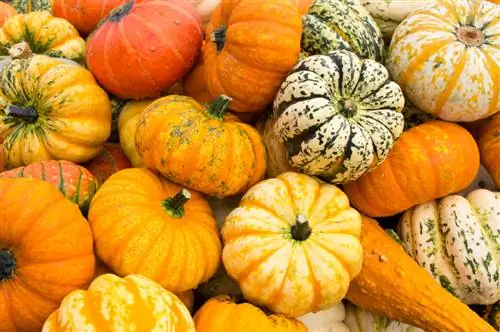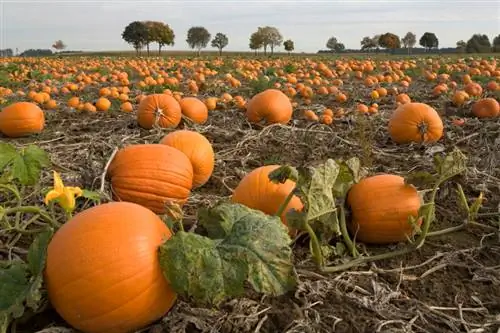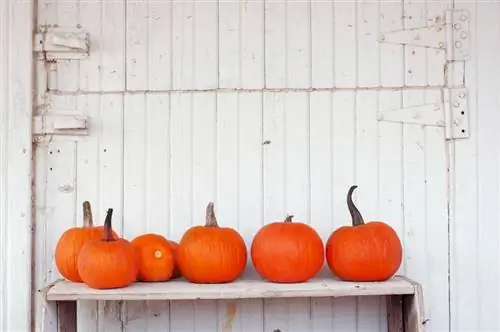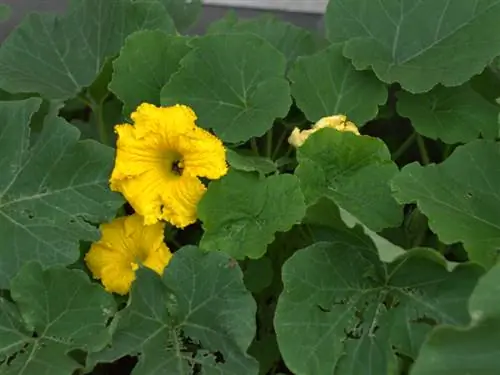- Author admin [email protected].
- Public 2023-12-16 16:46.
- Last modified 2025-06-01 06:02.
In the hobby garden, pumpkin is once again at the top of the popularity scale. Find out here how you can easily grow the delicious and decorative fruit vegetables in your garden. So it will be a success across the board.
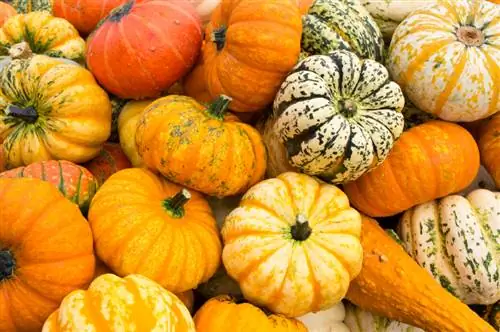
How to grow pumpkins in the garden?
To grow pumpkins successfully, you should first grow them indoors, plant them outdoors from mid-May and then water, fertilize and weed them regularly. Choose a sunny, nutrient-rich location and ensure there is enough space between the plants.
Growing indoors paves the way to magnificent pumpkins
Experienced hobby gardeners favor growing indoors for one compelling reason in particular: the cultivation period is extended by a remarkable 3 weeks. Given the impressive ripening time of 100 days on average, the arguments for direct sowing are therefore a lost cause. In the Central European climate, the time window for growing pumpkin closes very early.
- roughen the seeds with sandpaper or a file
- soak in lukewarm water for 24 hours
- insert 1-2 cm deep into seed soil and moisten
- Cover the seed container with cling film or cover it with glass
- create a germination temperature of 25 degrees Celsius in a partially shaded place
Sowing indoors should not take place before mid-April. Given the short germination period of one week with a subsequent three-week growth phase, the young plants arrive outdoors at exactly the right time. The planting season begins in mid-May - no earlier and no later.
Transplant correctly with ease
The location requirements of pumpkin are limited to two central attributes: sunny and nutrient-rich. If properties such as permeable, fresh and humic are added, nothing stands in the way of lush growth. This is how you plant the young plants:
- enrich the loosened, weed-free bed soil with compost (€12.00 on Amazon) and horn meal
- plant young pumpkin plants at least 100 cm apart
- water carefully and cover with garden fleece to protect against the cold
The maintenance work is limited to regular weeding, watering and fertilizing. If you are aiming for particularly large pumpkins, limit the number of fruits per plant by carefully pruning them. Experienced hobby gardeners also don't leave pollination to chance if they want to grow a specific pumpkin variety. In just a few simple steps, a selected female flower is pollinated with its male counterpart and tied with gauze.
Tips & Tricks
Pumpkin forms an ingenious plant relationship with corn. The tall growing corn plants serve as a natural climbing aid for pumpkin vines. At the same time, corn acts as an effective windbreak, while pumpkin reduces soil erosion.

